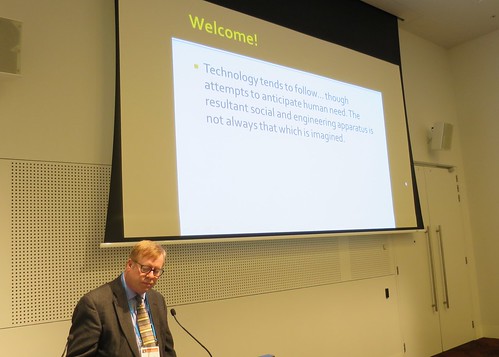Paper presented at #husITa14 in Melbourne, Australia, July 2014.
Presenter
Randall E. Basham (University of Texas at Arlington, USA).
Abstract
The aging of civilization in the developed countries, and many developing countries, that are considered technically advanced, is well underway. Some developed countries, such as the United States, are beginning to realize the need to create alternative and innovative methods of caring for, and maintaining, the functioning and health needs of the elderly, in the absence of sufficient numbers of younger indigenous caretakers, within these aged population countries. The need to import and train sufficient labor, including social work practitioners, to operate existing social institutions and care for the aging is creating a number of general social problems
According to (International Wealth Solutions, 2008) the world population, of above age 65 years, was expected to increase from 6.9% in the year 2000 to 19.3% by the year 2050. However, population growth is expected to slow with decreases in fertility rates. The already large aging population in the United States, estimated at 12.3% in the year 2000, will be increasing to 21.1% and peaking earlier by the year 2035. As a result, there may be insufficient numbers of available laborers to service either the needs of the elderly, or in some cases, society as a whole.
Emerging technologies show promise of bridging the service needs gap created by these demographic challenges. These include medical sensor technologies designed to improve independent living options (Smith, 2008), integrated sensor design platforms, and the combining of environmental health and activity monitoring systems (Mazzù, Scalvini, Giordano, Frumento, Wells, Lokhorst, & Glisenti, 2008), and the proposed the fusion of a radio frequency identification (RFID) tag (Niemeijer, Alistair; Hertogh & Cees, 2008) which could be coupled with an infra-red system (Professional Engineering, 2004) and acoustic systems to provide more effective monitoring (Istrate, Vacher, Serignat, Besacier & Castelli 2006), and information and communication (ICT) technologies.
Powerpoint
[slideshare id=36918530&doc=fri2171110randallbasham-140713011847-phpapp01]
Audio
[soundcloud url=”https://api.soundcloud.com/tracks/160598264″ params=”color=ff5500&auto_play=false&hide_related=false&show_comments=true&show_user=true&show_reposts=false” width=”100%” height=”166″ iframe=”true” /]
Comments
Please use the reply section below to comment on and discuss this paper.
Back to programme

